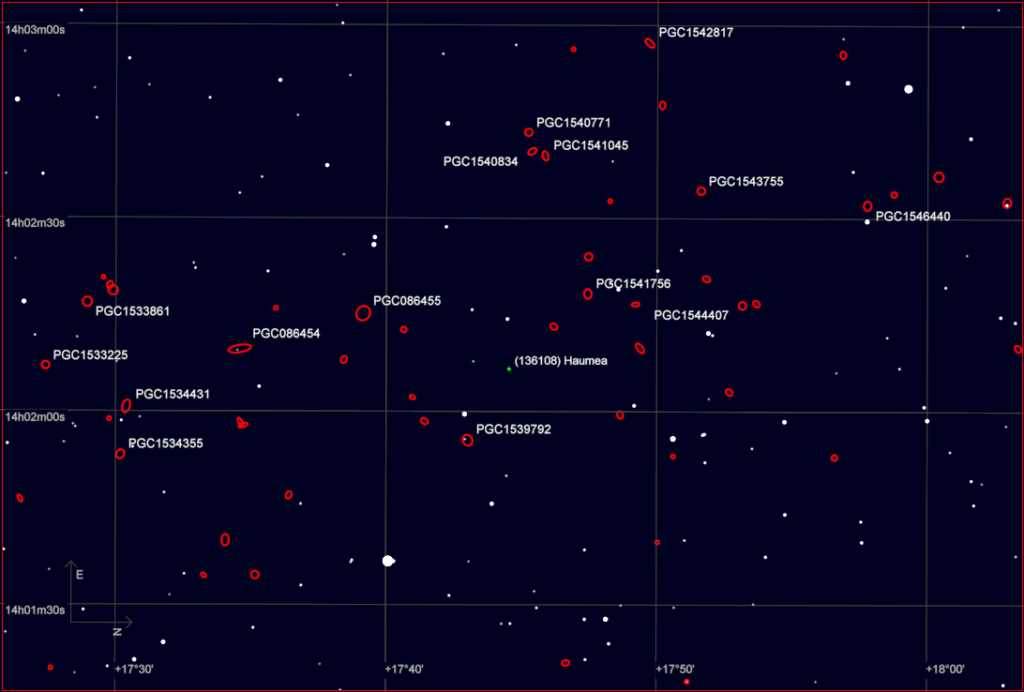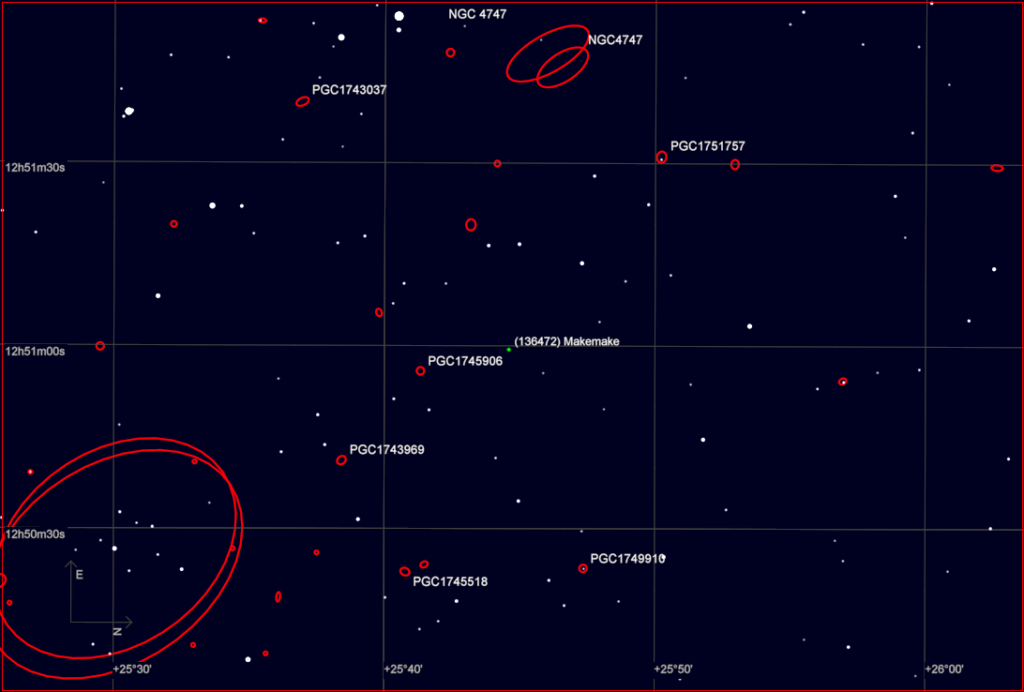Dwarf planets are always a subject of discussion during Planetarium Night at the Emerald Coast Science Center. It just so happens a couple of them are well placed right now and I was able to image Haumea and Makemake last week before they dipped below my western tree line. The Moon was close to full so there is some background gradient, but it is not too bothersome.
These dwarf planets also carry classifications of trans-Neptunian objects (TNO) and Kuiper belt objects (KBO). By convention, KBOs are named for mythological beings associated with creation and each was named accordingly. Each object is marked by two tick marks near the center of its image.
Haumea is named for the Hawaiian goddess of fertility and childbirth. It is currently in the constellation Bootes. Discovered in December 2004, it is approximately 770 miles in diameter and takes 283 years to orbit the Sun. Variations in the light curve of Haumea shows it is somewhat egg shaped and additional observations in 2005 found two moons orbiting Haumea.
Makemake is named for Easter Island’s Rapa Nui culture’s creator of humanity. It is currently in the constellation Coma Berenices and is 52.3 AU (4,860,659,162 mi.) from the Sun putting it just about as distant as it ever gets. This distance also makes it the furthest solar system object that I have ever imaged. Makemake is approximately 888 miles in diameter and takes 309 years to orbit the Sun. In April 2016, there was an announcement that the Hubble space telescope imaged a 100 mile wide moon orbiting Makemake.
![Haumea (136108) [C:9x300s]](https://ptobservatory.com/wp-content/uploads/2016/06/ann_rot_lvl_crv_ddp_crp_136108-Haumea-e1466382954745-1024x671.jpg)

![Makemake (136472) [C:9x300s]](https://ptobservatory.com/wp-content/uploads/2016/06/ann_lvl_crv_ddp_136472-Makemake-e1466381678336-1024x690.jpg)
